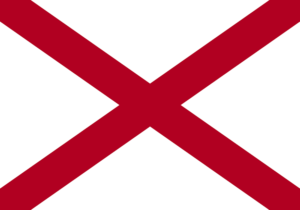Any party may challenge the venire on the ground that in its selection there has been a material, prejudicial departure from the requirements of law. Challenges to the venire shall be by motion in writing or on the record specifying the facts on which the challenge is based. Motions to challenge the venire shall be made before trial and shall be decided prior to voir dire examinations.
Ala. R. Crim. P. 18.3
Committee Comments
Rule 18.3 provides for challenge by both the state and the defendant to the entire venire when “there has been a material, prejudicial departure from the requirements of law.” This statement is the same as ABA, Standards for Criminal Justice, Trial by Jury 15-2.3 (2d ed. 1986).
Challenge to the venire in Alabama previously was governed by Ala. Code 1975, § 12-16-80, which provides that “No objection can be taken to any venire of jurors except for fraud in drawing or summoning the jurors.” The Alabama Supreme Court has upon several occasions stated that, pursuant to this statute (or its predecessors), fraud must be alleged in a motion to quash the venire. See Burns v. State, 246 Ala. 135, 19 So. 2d 450 (1944), and cases cited therein.
The purpose of Ala. Code 1975, § 12-16.80, was to prevent the quashing of venires for mere irregularities. Wimbush v. State, 237 Ala. 153, 186 So. 145 (1939); Vernon v. State, 245 Ala. 633, 18 So. 2d 388 (1944); Washington v. State, 46 Ala. App. 539, 245 So. 2d 824 (1971). Thus, an error in copying a name on the jury list served on the defendant was not reversible error where the name actually drawn from the box was the true name. Fowler v. State, 236 Ala. 87, 181 So. 266 (1938). Nor was failure to put the name of every qualified person on the roll or in the jury box reason for quashing the venire, in the absence of fraud. Fikes v. State, 263 Ala. 89, 81 So. 2d 303 (1955), rev’d on other grounds, 352 U.S. 191 (1957).
Rule 18.3 at first appears to depart from Alabama case law summarized above in that fraud need not be alleged, but only that there has been a “material, prejudicial departure” from the requirements of law. This language is intended to require a showing of prejudice. Thus, the rule differs from the Alabama statute in form more than in substance.
Furthermore, the Alabama cases have not required that actual fraud be present before the venire may be quashed, in spite of Burns v. State, supra. In Inter-Ocean Casualty Co. v. Banks, 32 Ala. App. 225, 23 So. 2d 874 (1945), the Court characterized fraud as “a relative term” and defined it as including “all acts and omissions which involve a breach of legal duty injurious to others.” In that case, the Court held that intentionally omitting the names of a large number of citizens who possess the qualifications required by law or jurors from the jury roll and jury box was a fraud in law which required quashing the venire drawn from the box.
In Taylor v. State, 222 Ala. 140, 131 So. 236 (1930), the Court held that where a person’s name was drawn and there was such a person, but another was summoned, appeared, and served instead of the person whose name was drawn, it was reversible error for the trial court to refuse to grant a motion for new trial because of defect in the venire. Here again, there was no allegation of fraud, nor did the Court mention fraud.
Thus, Rule 18.3 is not a departure from established Alabama law despite the language of Ala. Code 1975, § 12-6-80. Because a motion challenging a trial venire is in the nature of the old plea in abatement, it must be made before trial. The procedure for challenging a grand jury proceeding is controlled by Rule 12.9. Challenges to the trial venire are sometimes called challenges to the array, or motions to quash the venire (all jurors eligible to be called in that case). Challenges based upon the prosecutor’s discriminatory use of peremptory challenges are not encompassed in this Rule, because the striking process has not occurred at this point.

